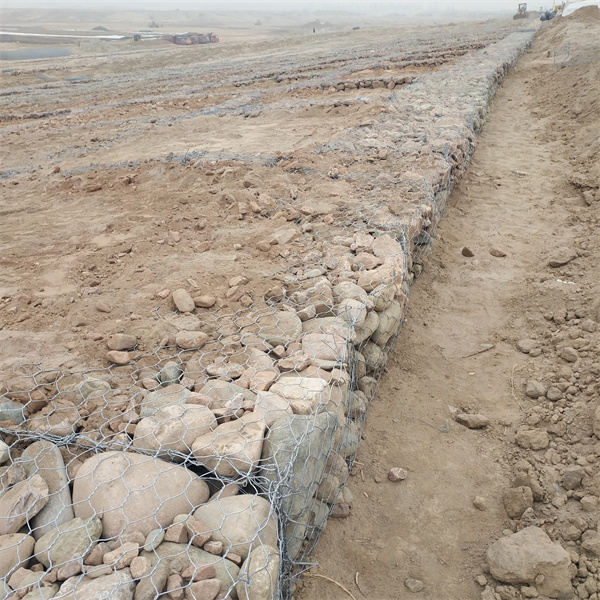Dec . 09, 2024 17:42 Back to list
Top Recommended Stones for Gabion Wall Construction by Leading Manufacturers
The Best Rocks for Gabion Walls A Comprehensive Guide for Manufacturers
Gabion walls have gained immense popularity in the construction and landscaping industries due to their versatility, durability, and aesthetic appeal. They are often used for erosion control, retaining structures, and decorative elements in gardens and public spaces. A crucial aspect of building robust gabion walls lies in selecting the right type of rocks. This article delves into the best rocks for gabion walls, providing insight for manufacturers and builders alike.
Why Rocks Matter in Gabion Construction
Gabion walls consist of wire mesh cages filled with rocks. The choice of rocks directly influences the structural integrity, stability, and visual appeal of the wall. When selecting rocks, manufacturers must consider several factors, including size, shape, weight, and durability. Here are some of the top rock types suitable for gabion walls
1. Granite
Granite is one of the most popular choices for gabion walls due to its impressive durability and resistance to weathering. Composed primarily of quartz and feldspar, granite offers a rugged texture that not only provides strength but also enhances the visual interest of the gabion structure. Available in various colors and patterns, granite rocks can create an aesthetically pleasing appearance while ensuring long-lasting performance.
2. Limestone
Limestone is another excellent option for gabion fill. It is a sedimentary rock that offers good compressive strength and durability. Limestone is often more economical than granite, making it a popular choice for large-scale projects. Furthermore, its natural colors, ranging from light grey to warm beige, allow for seamless integration into various landscapes.
3. River Rock
River rock is favored for its natural, smooth finish and variety of shapes and sizes. This type of rock is commonly found in riverbeds and brings a unique, organic aesthetic to gabion walls. River rock can provide excellent drainage, which is vital in preventing water buildup behind the wall. However, its smooth surface may make it less stable under heavy loads compared to craggy options like granite or limestone.
best rocks for gabion walls manufacturers

4. Basalt
Basalt is a dense volcanic rock known for its exceptional strength and durability. Its dark color and angular shape provide a contemporary look that appeals to modern architecture. Basalt is also resistant to weathering and erosion, making it a reliable choice for gabion walls in challenging outdoor environments. Additionally, its high density ensures that it can withstand substantial pressure, making it ideal for retaining structures.
5. Sandstone
For builders seeking a more textured and layered appearance, sandstone can be a suitable option. This sedimentary rock is relatively easy to work with and offers various colors, from soft pastels to deeper hues. While sandstone is not as durable as granite or basalt, it can still be a functional choice for decorative gabion walls or areas with lighter landscaping needs.
6. Fieldstone
Fieldstone is a term used to describe stones that are found on or near the surface of the ground. This rock variety is often irregularly shaped, giving it a unique and rustic appearance. Fieldstone can be a sustainable choice, as it is often sourced locally, reducing transportation costs and environmental impact. Its natural look can be ideal for garden landscapes or rustic-themed projects.
Conclusion
Selecting the best rocks for gabion walls is critical for ensuring the structure's functionality, durability, and appearance. Manufacturers should carefully consider the properties of various rock types—such as granite, limestone, river rock, basalt, sandstone, and fieldstone—before making a decision. Each rock type offers distinct advantages, catering to different project needs and aesthetic preferences.
Ultimately, the choice of rocks for gabion walls will reflect the project’s purpose, whether for functional use in erosion control or decorative purposes in landscaping. By understanding the characteristics of these top rock types, manufacturers can better advise their clients and create structures that stand the test of time, combining form and function in the realm of construction and design.
-
Why PVC Coated Gabion Mattress Is the Best Solution for Long-Term Erosion Control
NewsMay.23,2025
-
Gabion Wire Mesh: The Reinforced Solution for Modern Construction and Landscape Design
NewsMay.23,2025
-
Gabion Wall: The Flexible, Seismic-Resistant Solution for Modern Landscaping and Construction
NewsMay.23,2025
-
Gabion Wall Solutions: The Durable, Decorative, and Affordable Choice for Every Landscape
NewsMay.23,2025
-
Gabion Basket: The Durable and Flexible Alternative to Traditional Retaining Walls
NewsMay.23,2025
-
Gabion Basket: The Proven Solution for Slope Stability and Flood Control
NewsMay.23,2025
-
Versatility of Chain Link Fence Gabion
NewsMay.13,2025






